Michigan will play in one final football game in 2025, as the Wolverines will take on the Texas Longhorns in the Citrus Bowl on New Year’s Eve (3 p.m., ABC).
NIL
Michigan in the revenue

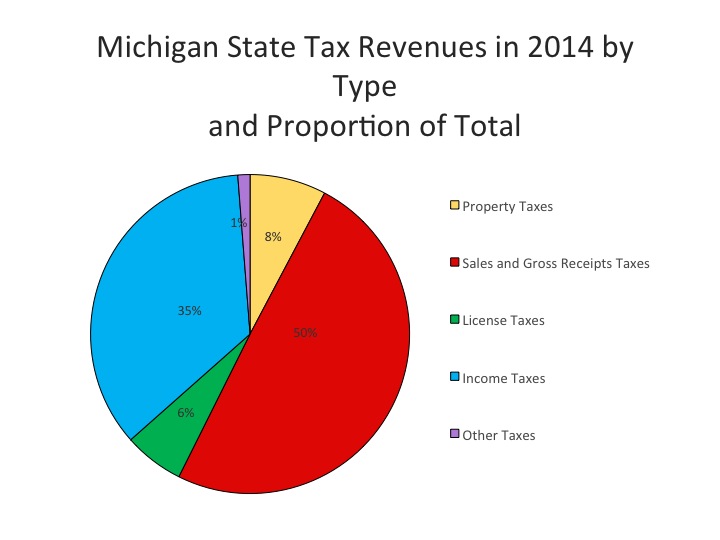

Last week, a federal judge made a landmark decision that transformed the world of college athletics. Schools were granted the authority to compensate athletes directly.
The court decision also regulated rules concerning name, image and likeness (NIL) payments, a ruling that came as Michigan’s NIL collective, Champions Circle, continues to thrive.
Before the ruling, many payments mirrored a “pay-for-play” model, where boosters and non-profit collectives would pay athletes significant amounts of money for minor services with the intention of bringing them to a certain school. Now, all NIL deals must pass through a clearinghouse to ensure athletes are receiving compensation for no more than their “fair market value.” Deals that don’t meet this criteria will be denied by the NCAA.
Like collectives around the country, Champions Circle is looking to adapt to the new NIL world. The Michigan Daily’s Jordan Klein sat down with Champions Circle co-founder Jared Wangler to discuss the collective’s strategy in the revenue-sharing era.
Responses have been edited for clarity.
Jordan Klein (JK): Players now have to be compensated for their “fair market value,” as approved by a Deloitte clearinghouse. How does that change the deals and other things Champions Circle does to get athletes to the University of Michigan?
Jared Wangler (JW): It’s a great question. I think everything you’re looking for is tailored around athlete compensation in this new revenue-sharing world, with increased oversight from the clearinghouse, and a little bit more regulation around athlete compensation outside of what the university can offer. With the new House settlement, universities are now permitted to share up to $20.5 million worth of benefits in Year 1 one. That will increase by 4% year over year, all the way to Year 3. Then, it will reset based on the equation that they came to, which is 22% of the average annualized revenues of the Power Four schools. That’s what the schools are now permitted to share.
What’s difficult is that the market for athlete compensation currently outweighs what the universities are able to bear. If you look across college football, men’s basketball, women’s basketball, softball, wrestling … If you want to be competitive at a national-title level or a conference-title level, you need to have adequate funding for what the talent costs.
I could walk you back four years when schools couldn’t provide anything, and the only money that could be provided was from brands and collectives. Most of the major markets created these collectives as a way to aggregate capital to pay the student athletes. The cap at that point was zero dollars, and there wasn’t regulation around how much money you could pay the student athlete, and what the exchange of services for. It was very laissez-faire. Now, the cap is $20.5 million, and any dollars above the cap that are being used for talent acquisition and talent retention. Those are going to be more regulated by the Deloitte clearinghouse, as you reference.
The Deloitte clearinghouse will be reviewing any deals that come from associated entities at the universities. Associated entities can mean a lot of things, but primarily they’re going to start with collectives and the multimedia rights holders. The multimedia rights holders, those are the Learfields of the world, the Playflys of the world. Think of it as the corporate sponsorship arm of these athletic departments.
In this current state, I’m bringing it back to where talent costs have gotten. You might have seen Texas Tech pay over $55 million worth of contracts to its student athletes. That’s football, that’s men’s basketball, it’s women’s basketball, baseball, softball … that’s their pool. That’s $20.5 million of revenue share from the university, and about $35 million coming from affiliated entities. It might be their collective, it might be Learfield, Playfly, whatever their MMR holder is, or a combination of the two. In this world, where there’s a clearinghouse to decide whether the deals are fair market value or not, it is the job of these collectives and associated entities, to have enough deal flow for the athletes that will pass through the ‘sniff test.’ That can be used in conjunction with the revenue sharing to come to a total compensation package that is agreeable to.
It’s probably not a secret like right now that most college football budgets, if you’re trying to compete at the top level, are between $20 and $30 to $35 million. That’s just football. And then basketball. Men’s basketball is anywhere between $10 million, and in some markets, up to $20 million. When you’re adding all these budgets together across multiple sports, you need more than just $20.5 million if you’re at a place like Michigan, Ohio State, Auburn, Alabama, Southern California, Texas.
That’s where you’re seeing these collectives and multimedia rights holders work together to get as much capital as they can, to then use and underwrite contracts for the athletes that will be above the cap. They have to be done in a way that can pass the clearinghouse standards for fair market value.
In practice, let’s say it’s a women’s basketball player, starting point guard, making $1 million. Let’s say $500,000 of it was going to come from revenue sharing, and $500,000 of it was going to come from the collective. The payment can’t just be a lump sum payment of $500,000 — show up to an event and then be on your merry way. There has to be actual work done and actual services rendered for the $500,000. That might be spread out over 12 months. It might look like 20 different commercial activations. They might do signing events, they might have merchandising promotions, they might work with brands that are affiliated with the collective or the multimedia rights holder, there might be media appearances.
There’s a whole host of services that groups like us have the athletes do to justify their NIL payments. That becomes even more critical if you want to be one of the schools ‘above the cap’ space, because that’s really the new name of the game. How much capital can you put together, and how many deals can you get to the student athletes that can make their way through the clearinghouse and be used in a way that helps underwrite competitive teams? That’s where a lot of this is moving.
JK: Deloitte estimated that roughly 70% of deals would not have passed through their clearinghouse standards. Where would that number sit for Champions Circle deals? How is the Champions Circle changing its approach so 100% of your deals meet the clearinghouse standards but also keep athletes at the compensation levels they were looking to get before these new rules?
JW: It’s hard to know for sure how much of our total deal volume would have gotten through the clearinghouse. I’d say with high confidence that we would bat at a significantly better percentage than only 30% of our deals getting through. That’s because our business was set up as a sports marketing agency before we built the collective. Valiant Management Group, which is the holding company to Champions Circle, was built as a group licensing agency, a talent rep agency and a merchandising company. It all spun up in 2021 around real commercial activity. It wasn’t until 2022 that we set up Champions Circle as a fund that dollars would come in, and then we would use that to help underwrite payments for the student athletes. All of our agreements with our athletes read as real commercial services agreements.
For the amount of money we’re paying the student athletes, are we getting that much in return for the work that they’re doing? If you took a peek behind the curtain of our event calendar, our brand activations and our merchandising, we’ve generated significant revenue of commercial dollars based on the services of the athletes. We’ve had over $7 million worth of NIL merchandise sold over the last four years. Over $3 million generated around fan events. So think golf outings, think signing events, think private meet and greets. We’ve brought in over $4 million worth of brand deals. When you look at these different parts of our business, we’re one of the few collectives, marketing agencies, that you could point to to be like, ‘Oh, they were actually using the athletes’ NIL to generate real commercial revenue.’
(Other groups) tried to capture as much money as possible and get it out the door before there’d be more regulation. Those groups are now either folding or trying to restructure as a marketing agency.
That’s really where most of this moves — putting more infrastructure and bones behind the athlete marketing agency component of what you do. There is real commercial value that the athletes’ marketing services bring, if done correctly. Not everyone is Bryce Underwood and can demand a large sum of money for an appearance or a post around the brand, but the athletes collectively can drive revenue, if done in a way that is capturing everybody’s rights together to promote a good or a service.
An example would be the starting point guard for the women’s basketball team. On her own, she couldn’t demand a $1 million budget for a brand activation. But that starting point guard in conjunction with seven of her teammates, and then becoming a Michigan women’s basketball partnership, the sum of the parts are greater than than the whole. It’s more of a collective mentality around utilizing all of their NIL together to promote a good or service, using all of their social media handles to distribute that content, using their voice to elevate whatever product or service we’re working with. It’s a different type of marketing. It’s more viewed around the property itself and aggregating all the talent together.
The really strong groups are going to separate themselves if they understand how to do this specific type of marketing. That is where you will be able to make a justifiable case to move significant sums of money through a clearinghouse, because you are a legitimate exchange of services.
JK: It seems like in the last year or so, Michigan’s NIL really took off. With the new regulation, is Michigan more uniquely positioned to succeed in the NIL space?
JW: I believe that Michigan’s always been primed to succeed in a world where it can level the playing field and start compensating its athletes. I long felt like we were fighting with one arm tied behind our back, because that’s an area where we were never active compared to some of the teams we were competing against. I do feel like we have had a leg up for quite some time.
The bad rap we got early on wasn’t because we were not doing NIL, we just weren’t using it in recruiting the way most other schools were. Almost all of our NIL money was predominantly used for the current student athletes, and not used in recruiting for prospective student athletes. That’s changed as rules and regulations have adjusted over time. Now, we do communicate NIL opportunities, and we do have those compensation conversations on the front end in recruiting, whereas we wouldn’t before. But the resources have been there. There’s been greater alignment with the athletic department over the last two years that’s really elevated the fundraising efforts.
Michigan has always been a place that demands brand attraction, and fan and donor engagement. We’ve had a competitive advantage over the last four years now that we can pay student athletes, and I believe that will only continue to grow that competitive advantage over time, because we are at a place like Michigan. It has the largest living alumni base. We have more brands that want to partner with the ‘block M’ and partner with the athletes in conjunction with the ‘block M’ more than any other school in the country. We sit in a robust business market in metro Detroit, but have national ties into different markets because we have alumni in New York and alumni in California.
We’re able to make a compelling pitch to brands when they want to do real NIL activations with our student athletes. Our friends down the street, in Michigan State and Columbus, don’t quite have that same competitive advantage because they’re so much more of a regional, localized brand than Michigan, which is more national. I do think that Michigan only stands to benefit from that.
You can’t discount the educational piece of it, and the relationship value of it. When the sum of money for these student athletes has gotten so significant, then you really have to start peeling back. What the advantage is now, if you have money, then how can you multiply that? Some of the best multipliers of compensation are relationships and education. How are you going to take those earnings in that window while you’re in college, and multiply that year over year. That’s our goal with what we’re trying to do, and I know that’s the goal with Michigan athletics — create great infrastructure, develop relationships.
As they’re earning that money, it’s not about how much you make. It’s about how much you can keep and how you can multiply that over time. There’s no better market in college sports than Michigan for that. You might be able to look at Stanford or Notre Dame. I’d say those are up to par, but Michigan is just so much bigger, and the engagement is so much more significant than those two other schools. I really do believe we check all the boxes, if you’re a prospective student athlete. … There’s a whole host of reasons, and we’re at the level now where we can compete from a compensation standpoint. It’s not like it was five years ago, six years ago and all the years before that, where some schools might have something under the table, and we had nothing. Now there’s an equalizer there. Michigan is very well positioned for the future of college athletics.
NIL
Shane Beamer blasts report surrounding cost of deals signed by LaNorris Sellers, Dylan Stewart

South Carolina fans received an early Christmas present this week when superstar quarterback LaNorris Sellers and star pass rusher Dylan Stewart both inked new rev-share/NIL deals with the Gamecocks to return for the 2026 season. Sellers announced his plan to return on Monday on X/Twitter, while Stewart confirmed his return Tuesday on Instagram.
And while South Carolina’s Shane Beamer undoubtedly welcomed both back with open arms, the fifth-year Gamecocks head football coach shot down a Tuesday night report from Columbia’s SportsTalk Media Network suggesting the price tag for the two Gamecocks stars was “in the neighborhood of $5 million from the school’s rev share total.”
SUBSCRIBE to the On3 NIL and Sports Business Newsletter
“Sounds to me like you need some much better sources,” Beamer reponded on X/Twitter on Christmas Eve. “This isn’t even remotely close to being true. #AnythingForClicks #Merry Christmas”
Sellers has been one of the top dual-threat quarterbacks in college football the past two seasons, combining on 5,915 total yards and 43 touchdowns as South Carolina’s starter in 2024-25. That included more than 2,700 yards and 18 touchdowns in a difficult 2025 season that saw Beamer part ways with offensive coordinator Mike Shula in early November. Beamer has since hired former Arkansas, FSU and TCU offensive coordinator Kendal Briles as the Gamecocks’ new OC ahead of Sellers’ third season as QB1.
“He’ll be the first to tell you he needs to play better, and we’ve got to coach him better,” Beamer said earlier this month, according to On3’s Gamecock Central. “We’ve got to be better around him, and we all have to be accountable. He understands that. … (And) all indications I’ve had from LaNorris are that he wants to be here. … He knows that the job is not finished, and there’s a lot of excitement about ’26, and he and a lot of our other players that are returning feel that same way.”
Meanwhile, the 6-foot-5 and 250-pound Stewart has totaled six forced fumbles, 11 sacks, 22.5 tackles for loss and 56 total tackles in 24 career games across his first two seasons in Columbia. Stewart is a former Five-Star Plus+ signee in the 2024 recruiting class as the nation’s No. 3 EDGE rusher and No. 17 overall player, according to the Rivals Industry Ranking.
“They’re extremely excited about what this team could be in 2026, and they’re a big part of that. There’s no question,” Beamer said on National Signing Day earlier this month. “I know there’s no sense of, ‘I’m not really sure South Carolina’s where I want to be.’ It’s them making the best decisions for them and their families and their futures.”
NIL
Alabama football: Parker Brailsford spreads cheer, DeBoer talks Indiana
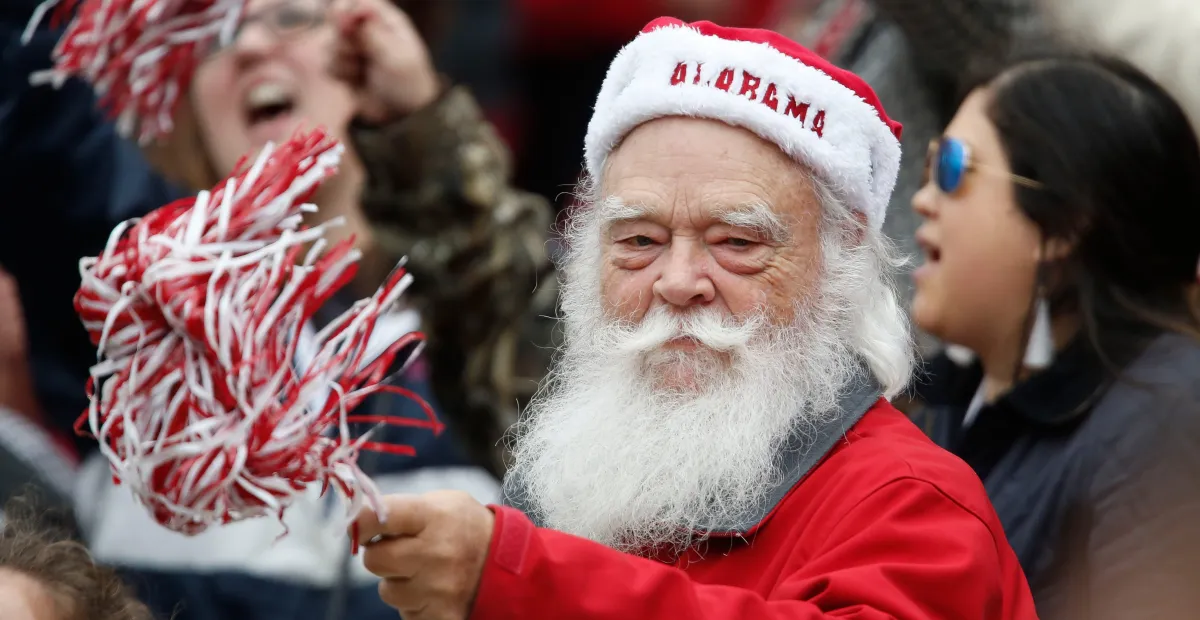
DeBoer spent one year as Tom Allen’s offensive coordinator, helping Indiana reach its first Florida-based January bowl game (at a time when that still carried greater meaning) in 2019.
And Cignetti spent four years as part of Nick Saban’s first Alabama staff, coaching wide receivers and coordinating recruiting for the program Cignetti eventually helped win a national championship.
But they’ve both distinguished themselves in their profession through their willingness to climb the coaching pyramid: From outside Division I, through lower levels as either a head coach or coordinator, all the way up to the sport’s biggest stage.
“Knowing coach Cignetti and — you referred to it — his path, nothing but respect for how he’s done it, how he’s gotten to this spot,” DeBoer said.
NIL
Surprising List Of Colorado Buffaloes’ Biggest NIL Valuations
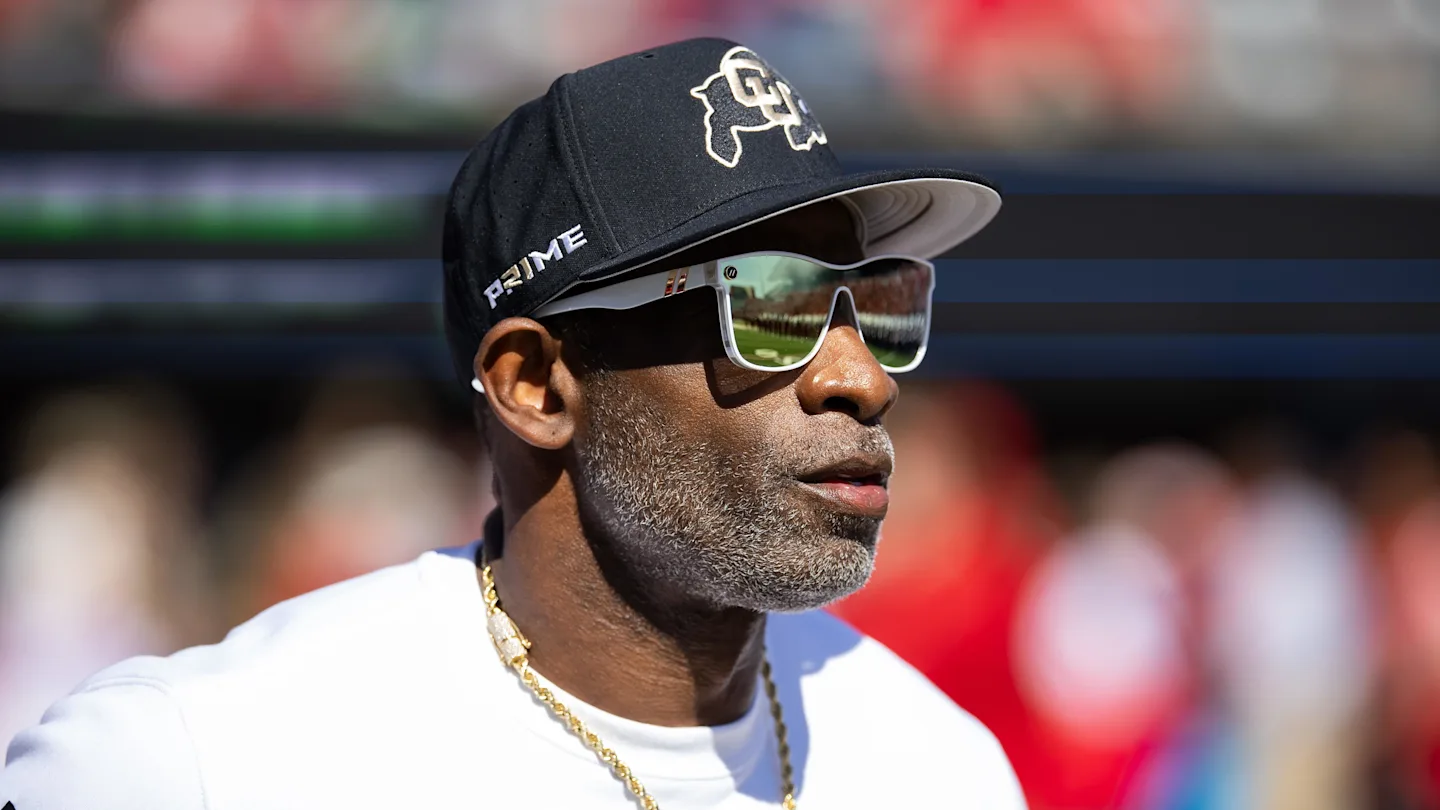
The Colorado Buffaloes are facing a mass exodus through the NCAA Transfer Portal. One reason that players enter the portal in the current college football landscape is due to Name, Image, and Likeness (NIL) deals.
The current Colorado Buffaloes players with the highest NIL Valuation according to On3 are notable when evaluating who will be on the team next season.

Colorado Players With Highest NIL Valuation
- Jordan Seaton: $1.7M
- Julian Lewis: $1.1M
- Omarion Miller: $570K
- Jehiem Oatis: $390K
- Tawfiq Byard: $358K
- Dre’lon Miller: $321K
- Noah King: $315K
- Christian Hudson: $312K
- Carde Smith: $311K
- Zarian McGill: $119K
NIL valuations are not how much players are earning, but On3’s way of measuring a player’s projected annual value. It combines roster value and NIL value.

One of the most significant aspects of the top 10 Colorado players is that only two are set to return to the team in 2026: offensive tackle Jordan Seaton and quarterback Julian Lewis. Offensive lineman Zarian McGill is also in the top 10, but is headed to the NFL in 2026.
The remainder of the top 10 in NIL valuation have announced their intention to enter the portal. With the number of players set to leave the team, the Buffaloes will lose several highly valued players.
MORE: Deion Sanders Reportedly Hires Familiar Name As Colorado Running Backs Coach
MORE: Why Shedeur Sanders Will Bounce Back From Late-Season Struggles
MORE: Insider Reveals Biggest Reason Behind Colorado’s Transfer Portal Mass Exodus
SIGN UP FOR OUR NEWSLETTER HERE
Jordan Seaton Highest NIL Valuation On Colorado
Seaton has the highest NIL valuation and is one of the most critical players on the Buffaloes. Seaton has been with the program for two years, both of which have been dominant. He missed three games due to a foot injury, but allowed just two sacks and five quarterback hurries over 328 pass protection snaps.
Seaton will be entering his third year with the program, which will likely be his last, as he could declare for the NFL draft after the 2026 season.

After a 3-9 season, it was possible Seaton would enter the portal, but he is expected to return to the Buffaloes in 2026. Seaton will play a prominent role in Colorado’s offense next season, with Lewis set to be the team’s week 1 starter. As Colorado looks to take a step forward, having an elite player on the offensive line who is also a veteran on the team will be crucial.
Julian Lewis Ready To Lead The Buffaloes
Lewis is preparing for a big year with the Buffaloes after developing throughout the 2025 season. He was a big pickup in the 2025 recruiting class, initially committed to the USC Trojans before flipping to Colorado.
Lewis started in three games this season, his first being against the West Virginia Mountaineers on Nov. 8. Colorado coach Deion Sanders decided to redshirt Lewis, which meant the quarterback did not play in the final game of the season.

“I’ve made a decision that JuJu is going to redshirt,” Sanders told the media when announcing the decision. “That’s my decision. I want what’s best for the kid, what’s best for his family, what’s best for this wonderful university that has given me the tremendous opportunity and given him the opportunity. I think for the program, it’s best for everyone, but mainly it’s great for him.”
Lewis passed for 589 yards, four touchdowns, and no interceptions. The Buffaloes hired offensive coordinator Brennan Marion, who helped turn programs around by fixing the offense. With Marion and Seaton’s return, Lewis is set up for success in 2026 and beyond.
Though four games are a small sample size, the young quarterback has a high ceiling. He made some big throws, and with Marion, Lewis has the chance to take off in 2026.
RECOMMENDED ARTICLES
NIL
Biff Poggi should no longer be considered for Michigan’s HC job
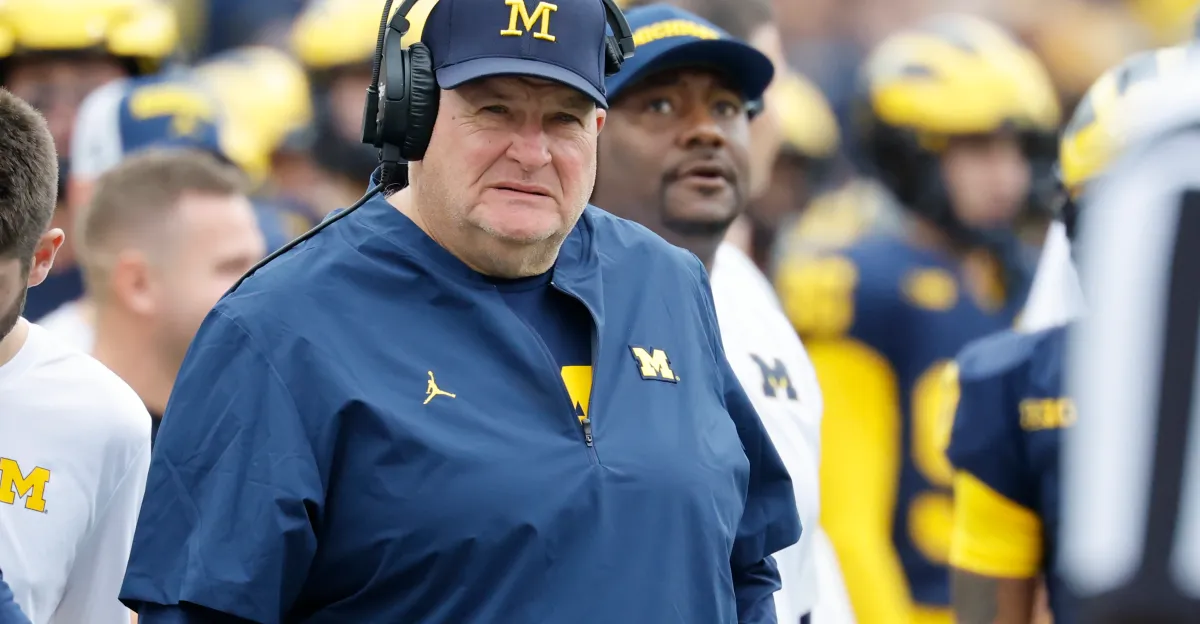
The team will be without at least three players, as Derrick Moore, Jaishawn Barham and Giovanni El-Hadi are all skipping the game to prepare for the NFL Draft. Speaking to the media on Monday, interim head coach Biff Poggi didn’t think anyone else on the team would opt out of the game. However, his tune changed quite a bit just two days later, as he speculated on a Texas-based podcast called “The Stampede” that he may be down even more guys than that.
Players on the team were sent home to be with family for Christmas earlier this week, but Poggi doesn’t know how many of those players will come back on Friday when the team is slated to leave for Orlando.
“I think there’s a really good chance that we’re going to have many more opt outs for the game, unfortunately, because we’re in such a stat of flux,” Poggi said. “And when they get to the business side of it, they think, ‘Well, we don’t have a coach,’ or, ‘We’ve had this situation with our former coach, there’s investigations and all these things, I don’t know who’s going to coach me. Why do I want to play in that game?’ So I can see some of that happening, too. And I would tell you on (December) 26th, we’re probably going to have a significantly different roster than we had yesterday when we sent them home.”
Poggi also mentioned how he thinks “most of the guys opting out need to play … they need the film, and they need to play well,” and that “team the way you and I knew it is gone now. And now it is strictly a financial and a business decision, and the head coach and the position coaches really are not players in that discussion.”
In other words, the decisions the players are making are based on what their families and agent are telling them, and they are not consulting with their coaches one bit. And in other words — players are doing what’s in their best interest.
As a former hedge fund manager, Poggi should understand risk management and trying to generate the best returns possible. That’s why Poggi said he doesn’t want to “be the guy that talks them into (playing a bowl game), and then something happens.” So while he understands why the players are doing what they are doing, he isn’t exactly onboard with how the decisions are being made.
There’s a lot to digest in this podcast, and I think the main takeaway for me is that Poggi is not made to be a head coach in college football. And that’s fine — he’s been very successful and has made a lot of money doing other things. And if he wants to continue making an impact in the lives of young adults, he can still do that, but he should by no means be doing that in the position of head coach at the University of Michigan.
And if you need one more quote as far as why Poggi should not be considered any longer for this position — and this is a real quote, by the way — here you go:
“I would ask one thing, and I’m being very serious — you need to pray for us,” Poggi said. “Because we are going through things that no young kid should have to go through … just when you hit your knees tonight, you don’t have to pray that we win, I know that ain’t gonna happen, just pray that the good lord will give me the right wisdom to do this the way it needs to be done.”
Update: Some people are interpreting this as Biff saying he knows the Texas podcasters wouldn’t pray for Michigan since they’re playing in the bowl game, while others are interpreting it as Biff saying they won’t win the game. If he meant the former, I do sincerely apologize, but the way I initially interpreted it while listening to the podcast, it sounded like he was saying the latter, especially given other comments he’s made about how he was hoping to not play against Texas because they’re a good team.
With it being the holiday season, Coach Poggi, I will give you what you are requesting and I will pray for you and the players to get through this. You’re right — no young person should have to endure the things that they have endured over the last couple weeks. I can’t imagine being in college and having all that happen at once.
However, to go on an opponent’s podcast and air Michigan’s dirty laundry publicly is not something an interim head coach should be doing. Whether you realize it or not, you have given the players that are on the fence a reason to not come back for the bowl game (and beyond that).
If this podcast appearance didn’t eliminate Biff from consideration, I don’t know what will. But under no circumstances should he be legitimately be considered for this job any longer.
Merry Christmas, and thank God for Dusty May, Kim Barnes Arico and Brandon Naurato.
NIL
The College Football Playoff Is Mostly About Who Spent the Most
The winter holidays mark a time of joy and celebration for some, but are more defined by anxiety for others. Amid college football’s annual holiday-season tradition of bowls games, the sport’s shift from the long-held postseason customs to an expanded playoff heightens anxiety.
Regardless if one falls in the category of joyful reveler or cantankerous Scrooge, consumerism plays a critical role in the season. College football is no different, with the recent advent of NIL becoming a foundational element of the game evident in the remaining Playoff field.
As the bracket whittled down from 12 to eight with last weekend’s opening-round games, the College Football Playoff demonstrated an exercise comparable to Eddie Murphy’s monologue about Christmastime spending in the seasonal classic Trading Places: “I ain’t gonna have money to buy my son the G.I. Joe with the kung-fu grip, and my wife ain’t going to make love to me ‘cause I got no money.”
Well, reaching the Playoff and advancing are similar. The eight quarterfinalists stand as testament to spending power — though it’s difficult to pinpoint exactly how much, which contributes to rising anxieties.
A CBS Sports article ahead of the 1st Round broke down the tournament into NIL-spending tiers, with five of the 12 labeled “elite spenders.” Four of those play on in the round of eight: reigning national champion Ohio State, Oregon, Texas Tech and Miami, which outlasted fellow elite spender Texas A&M in what was perhaps uncoincidentally the most competitive of the four opening-round games.
James Madison and Tulane were both routed against deep-pocketed opponents in Oregon and Ole Miss, which isn’t necessarily a data point worth applying to any NIL discussion. Athletic departments with more funds through television revenue, merchandising, etc. have long had advantages against their counterparts from conferences with fewer resources, and that disparity is a defining trait of the underdog stories fans love.
In the case of this year’s Playoff other historical underdogs, however, NIL spending is an undeniably crucial factor in Indiana and Texas Tech pursuing the national championship.
The top-seeded, undefeated Hoosiers head into their first Rose Bowl Game in almost six decades behind the Heisman Trophy winner Fernando Mendoza. The Indiana quarterback has an NIL valuation of $2.6 million per On3.com estimates, up from the $1.6 million estimate shortly after Mendoza’s transfer from Cal.
And while less dramatic in a historical context than Indiana’s rise to prominence, Texas Tech competing for the national championship is a significant jump for a program previously destined to also-ran status. The Red Raiders are underdogs in the sense that they were rarely competitive on a national level previously, but Texas Tech reportedly spends on NIL with a fervor comparable to top-tier soccer clubs.
The soccer parallel works in part because, like a once-middling Manchester City became an English Premier League powerhouse coinciding with an infusion of cash, Texas Tech owes much of its rise to oil money.
On3 reported Texas Tech spent a whopping $28 million on its 2025 roster, making it one of the highest-priced lineups in college football. The public face of Tech’s NIL collective, former Red Raiders lineman Cody Campbell, sold his energy company Double Eagle for a reported $4.1 billion earlier this year.
So does this year’s Playoff foreshadow all our football holiday seasons to come? Does a program need its own version of Landman to strike it rich in order to compete?
Looking at the other closely contested 1st-Round matchup — Alabama’s comeback win at Oklahoma — offers fascinating perspective. It pit against one another two historically outstanding programs that CBS Sports designated as “good, but not as elite as you think” spenders.
That’s an interesting description, as it aligns particularly with Alabama’s drop-off from the most dominant program in the sport in the years just before the Supreme Court allowed NIL payments in 2021, to the Crimson Tide’s current positioning as a consistent winner but hardly a world-beater.
Now, it’s overly simplistic to credit Alabama’s marginal slide to NIL spending and discredits just how remarkable Nick Saban was as the Tide’s head coach. But it is noteworthy that Saban has been an outspoken critic not of NIL, but its lack of structure.
“I’m all for the players making money,” [but] I don’t think we have a sustainable system right now,” Saban said last spring. I think a lot of people would agree with that. In terms of the future of college athletics period, not just football, how do we sustain 20 other non-revenue sports that create lots of other opportunities for people in the future?”
In its parallel with the holiday season, Saban’s comments about the long-term health of college athletics during this present-day era of unregulated spending might bring to mind nightmares of credit-card bills coming due after a gift-buying spree.
You have perhaps noticed much of the information on NIL spending is presented in estimates. The lack of concrete oversight or regulation makes evaluating the landscape difficult, and only adds to the anxiety surrounding NIL.
NIL
College Football Playoff team loses two-time All-American to transfer portal
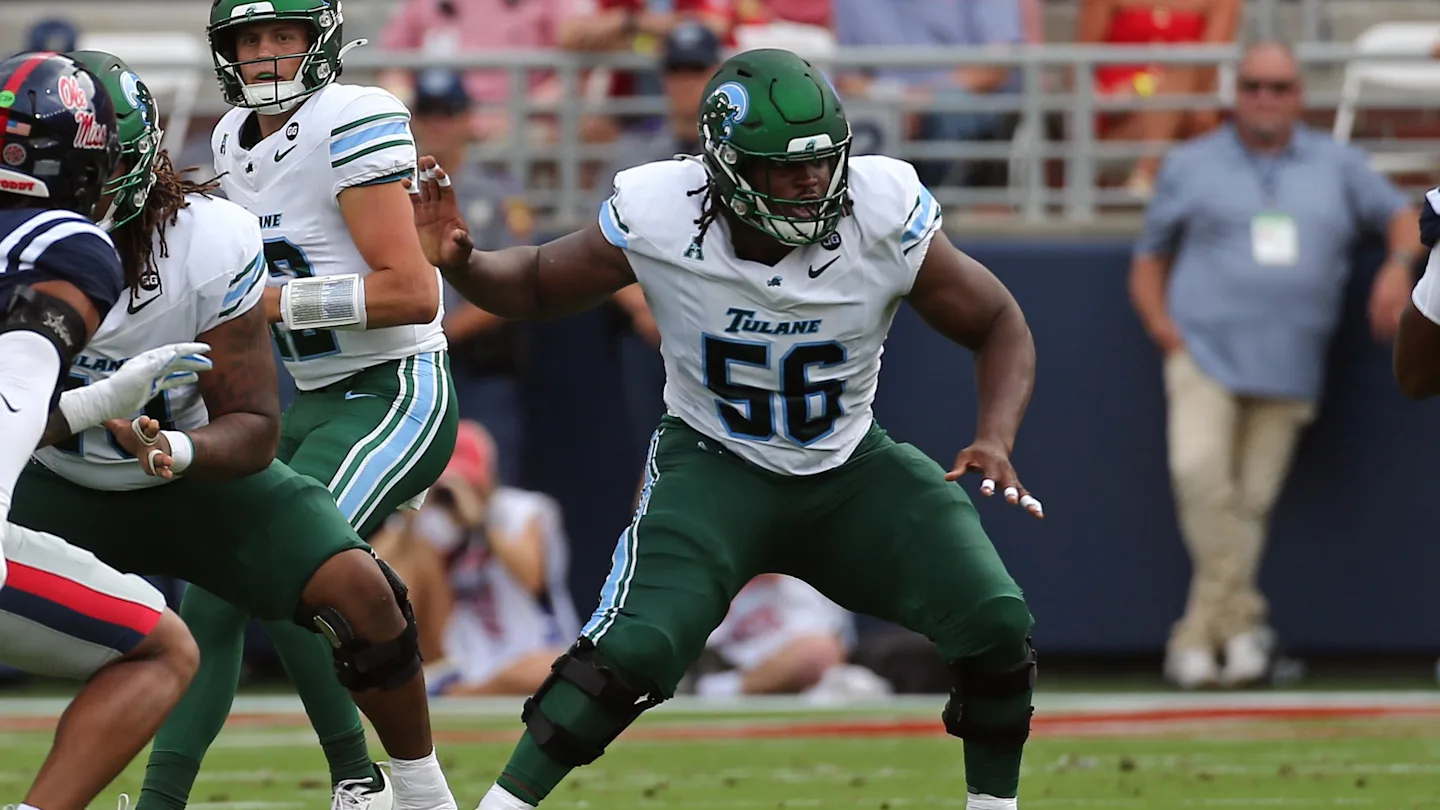
Tulane finished the regular season as American Athletic Conference champion and secured the AAC’s automatic berth into the expanded 12-team College Football Playoff, closing the year with a 12–1 record.
Unfortunately, the Green Wave’s historic season ended with a 41–10 loss to Ole Miss in the first round, as the Rebels dominated from the opening kickoff and advanced to face No. 3 Georgia in the Allstate Sugar Bowl.
Jon Sumrall, Tulane’s head coach since December 2023, guided the program to consecutive conference-title contention and the 2025 AAC crown before taking the open Florida job on November 30, agreeing to a six-year deal worth nearly $7.5 million annually.
Now, one of the Green Wave’s cornerstone players is set to leave alongside him.
On Wednesday, Rivals’ Hayes Fawcett reported that Tulane All-American interior offensive lineman Shadre Hurst is entering the NCAA transfer portal.
Hurst is a redshirt junior interior lineman who has started 36 career games for the Green Wave, earning First-Team All-AAC honors and All-American recognition in both 2024 and 2025.
Tulane’s athletic department also placed Hurst on multiple preseason national watch lists in 2025, including the Outland Trophy Preseason Watch List.
Pro Football Focus graded Hurst with a 90.5 pass-blocking mark, placing him among the nation’s highest-rated pass protectors at his position.

Before arriving at Tulane, Hurst was a Cartersville (Georgia) high-school product who earned First Team All-State honors from the AJC and First Team All-Region 7-AAAAA recognition.
He also emerged as one of the Southeast’s top heavyweight wrestlers, finishing state runner-up as a junior before winning a state championship as a senior.
Despite those accolades, Hurst was an unranked prospect who held just five offers—Tulane, UMass, Washington State, Chattanooga, and Southeast Missouri State.
Now, he is widely viewed as both an NFL prospect (projected third- to fourth-round pick) and a highly attractive Power Four transfer target in need of experienced interior offensive line help.
Read More at College Football HQ
- $1.6 million QB linked to College Football Playoff program
- SEC head coach named as ‘surprising’ candidate to replace Sherrone Moore at Michigan
- Unexpected college football program among favorites for $2 million transfer QB
- Major college football QB expected to ‘command’ up to $5 million in transfer portal
-

 Motorsports2 weeks ago
Motorsports2 weeks agoSoundGear Named Entitlement Sponsor of Spears CARS Tour Southwest Opener
-

 Motorsports2 weeks ago
Motorsports2 weeks agoDonny Schatz finds new home for 2026, inks full-time deal with CJB Motorsports – InForum
-

 Rec Sports3 weeks ago
Rec Sports3 weeks agoHow Donald Trump became FIFA’s ‘soccer president’ long before World Cup draw
-

 Rec Sports2 weeks ago
Rec Sports2 weeks agoDavid Blitzer, Harris Blitzer Sports & Entertainment
-

 Motorsports3 weeks ago
Motorsports3 weeks agoJR Motorsports Confirms Death Of NASCAR Veteran Michael Annett At Age 39
-
Sports3 weeks ago
Elliot and Thuotte Highlight Men’s Indoor Track and Field Season Opener
-
Sports3 weeks ago
West Fargo volleyball coach Kelsey Titus resigns after four seasons – InForum
-

 Motorsports2 weeks ago
Motorsports2 weeks agoRick Ware Racing switching to Chevrolet for 2026
-

 NIL2 weeks ago
NIL2 weeks agoDeSantis Talks College Football, Calls for Reforms to NIL and Transfer Portal · The Floridian
-
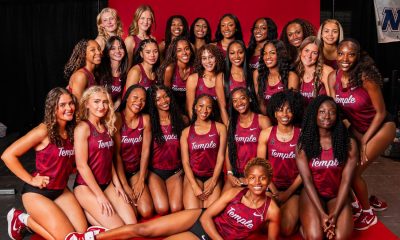
 Sports3 weeks ago
Sports3 weeks agoTemple Begins Indoor Track & Field Season at UPenn This Weekend































